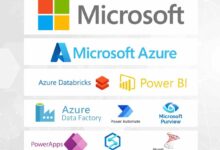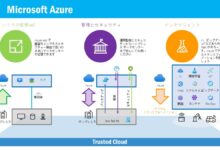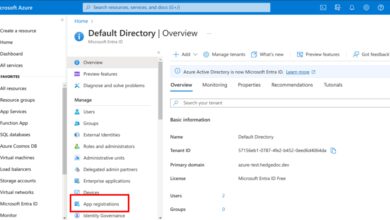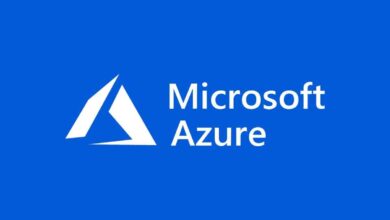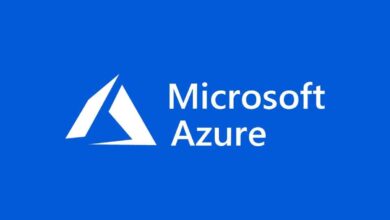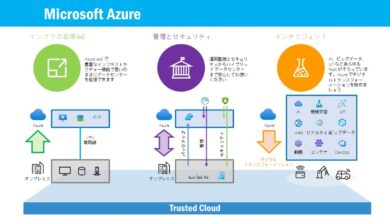Azure Portal Log In: 7 Proven Steps to Master Access Instantly
Logging into the Azure portal is your first step toward managing cloud resources with ease. Whether you’re a developer, administrator, or business owner, mastering the azure portal log in process is essential for seamless cloud operations. Let’s break it down step by step.
Understanding the Azure Portal and Its Importance

The Azure portal is a web-based interface provided by Microsoft that allows users to manage their cloud services, virtual machines, storage accounts, networking, and more. It’s the central hub for interacting with Microsoft Azure, one of the world’s leading cloud computing platforms. A successful azure portal log in unlocks access to powerful tools that drive innovation and scalability.
What Is the Azure Portal?
The Azure portal, accessible at portal.azure.com, is a unified console where users can deploy, configure, monitor, and manage all Azure resources. It features a clean, intuitive dashboard with customizable blades, real-time monitoring, and integrated command-line tools like Azure Cloud Shell.
- It supports role-based access control (RBAC) for team collaboration.
- It integrates with other Microsoft services like Office 365, Dynamics 365, and Power Platform.
- It provides visual analytics and cost management dashboards.
Why Secure Azure Portal Log In Matters
Because the Azure portal gives full administrative control over cloud infrastructure, securing the azure portal log in process is critical. Unauthorized access can lead to data breaches, service disruptions, or financial loss due to misuse of resources.
“The Azure portal is not just a dashboard—it’s the command center for your entire cloud ecosystem.” — Microsoft Azure Documentation
Implementing strong authentication methods, monitoring sign-in attempts, and using conditional access policies are foundational steps in protecting your environment from cyber threats.
Step-by-Step Guide to Azure Portal Log In
Performing an azure portal log in correctly ensures you gain immediate access without delays or security warnings. This section walks you through each phase of the login process, from navigating to the portal to verifying your identity.
Navigating to the Azure Portal Website
To begin the azure portal log in process, open any modern web browser—such as Google Chrome, Microsoft Edge, or Firefox—and go to https://portal.azure.com. This is the official URL for the Azure management portal.
- Avoid third-party links or search engine ads that mimic the login page to prevent phishing attacks.
- Bookmark the site for quick access in the future.
- Ensure your browser accepts cookies and has JavaScript enabled for full functionality.
Entering Your Credentials
Once on the login page, enter your Azure account email address (also known as a User Principal Name or UPN). This could be a Microsoft account (e.g., outlook.com, hotmail.com) or a work/school account associated with an Azure Active Directory (Azure AD) tenant.
After entering your email, click “Next.” You’ll then be prompted to enter your password. Make sure your keyboard’s Caps Lock is off and that you’re typing the correct password. If you’re using a work account, your organization may enforce complex password policies.
Completing Multi-Factor Authentication (MFA)
Most organizations require multi-factor authentication (MFA) during the azure portal log in process. After entering your password, you’ll be asked to verify your identity using a second method, such as:
- A notification sent to the Microsoft Authenticator app.
- A one-time code generated by an authenticator app or sent via SMS.
- A phone call to a registered number.
- Biometric verification (fingerprint or facial recognition) if using Windows Hello or a compatible device.
Follow the prompts to complete this step. Once verified, you’ll be redirected to the Azure portal dashboard.
Common Issues During Azure Portal Log In and How to Fix Them
Even experienced users encounter problems when trying to perform an azure portal log in. These issues range from forgotten passwords to network restrictions. Understanding how to troubleshoot them saves time and reduces frustration.
Forgot Password or Locked Account
If you’re unable to log in because you forgot your password or your account is locked, click the “Forgot password?” link on the login screen. This will guide you through the self-service password reset (SSPR) process.
- You must have previously registered security information (email, phone, or authenticator app).
- If SSPR isn’t configured, contact your Azure administrator for assistance.
- Wait 30 minutes after multiple failed attempts; accounts are temporarily locked for security.
Multi-Factor Authentication Failures
MFA failures are among the most common causes of failed azure portal log in attempts. Reasons include:
- Not receiving push notifications on the Microsoft Authenticator app.
- Using an outdated or unregistered phone number.
- Time synchronization issues with TOTP (Time-Based One-Time Password) apps.
To resolve these:
- Ensure your device has internet connectivity.
- Check that the date and time settings on your phone are correct.
- Re-register your authenticator app if necessary through the Microsoft MFA setup page.
Browser and Cache-Related Problems
Sometimes, the issue isn’t with credentials but with the browser itself. Corrupted cache, disabled cookies, or outdated versions can block the azure portal log in process.
- Clear your browser’s cache and cookies.
- Try logging in using an incognito or private browsing window.
- Update your browser to the latest version.
- Disable browser extensions that might interfere with authentication (e.g., ad blockers).
If problems persist, try switching browsers entirely. Microsoft recommends using Edge or Chrome for optimal performance.
Security Best Practices for Azure Portal Log In
Securing your azure portal log in process goes beyond just using a strong password. With increasing cyber threats, adopting proactive security measures is non-negotiable for individuals and organizations alike.
Enable Multi-Factor Authentication (MFA)
MFA is one of the most effective ways to protect your Azure account. Even if someone obtains your password, they won’t be able to complete the azure portal log in without the second factor.
- Enforce MFA for all users, especially administrators.
- Use the Microsoft Authenticator app instead of SMS, which is more vulnerable to SIM-swapping attacks.
- Configure MFA through Azure AD under Security > Multi-factor authentication.
Use Conditional Access Policies
Conditional Access in Azure AD allows you to define rules that control how and when users can log in. For example, you can restrict azure portal log in attempts based on:
- Location (block logins from high-risk countries).
- Device compliance (only allow managed devices).
- Sign-in risk level (detected by Azure AD Identity Protection).
- Application access (limit which apps users can sign into).
These policies help enforce zero-trust security models and reduce the attack surface.
Monitor Sign-In Activity Regularly
Azure provides robust tools to audit and monitor login attempts. Use the Azure AD Sign-In Logs to review who accessed the portal, from where, and whether the attempt succeeded or failed.
- Access logs via the Azure portal under Azure Active Directory > Monitoring > Sign-in logs.
- Set up alerts for suspicious activities (e.g., multiple failed logins, logins from unusual locations).
- Integrate with Microsoft Sentinel for advanced threat detection and response.
“Visibility into sign-in behavior is the first line of defense against unauthorized access.” — Microsoft Security Best Practices
Alternative Methods for Azure Portal Access
While the standard web-based azure portal log in is the most common method, Microsoft offers alternative ways to access Azure resources—especially useful for automation, scripting, or headless environments.
Using Azure CLI for Portal-Like Access
The Azure Command-Line Interface (CLI) allows you to manage Azure resources from a terminal or script. While it doesn’t replace the graphical portal, it offers equivalent functionality.
- Install Azure CLI from learn.microsoft.com.
- Run
az loginto authenticate via a browser-based flow. - Use commands like
az vm listoraz group createto manage resources.
This method is ideal for DevOps teams and developers who prefer automation over manual portal navigation.
Logging In via Azure PowerShell
Azure PowerShell is another powerful tool for managing Azure resources, particularly for Windows administrators.
- Install the
AzPowerShell module. - Run
Connect-AzAccountto initiate the azure portal log in process. - Authenticate using your browser and complete MFA if required.
Once logged in, you can run scripts to automate deployments, backups, and monitoring tasks.
Single Sign-On (SSO) Integration
Organizations using enterprise identity providers (like Okta, Ping Identity, or AD FS) can configure Single Sign-On (SSO) for seamless azure portal log in experiences.
- Users authenticate once through their corporate identity system.
- No need to remember separate Azure passwords.
- Centralized control over access and session timeouts.
SSO improves user experience while maintaining strong security through centralized identity governance.
Role-Based Access Control After Azure Portal Log In
After a successful azure portal log in, your access level depends on your assigned roles. Azure uses Role-Based Access Control (RBAC) to enforce permissions, ensuring users only see and modify what they’re authorized to.
Understanding Built-In Roles
Azure provides several predefined roles that simplify permission management:
- Owner: Full access to all resources, including the ability to delegate access.
- Contributor: Can create and manage resources but cannot grant access to others.
- Reader: View-only access to resources.
- Virtual Machine Contributor: Manage VMs but not networking or storage.
These roles can be assigned at the subscription, resource group, or individual resource level.
Creating Custom Roles
For specialized needs, you can define custom roles with granular permissions. For example, a database administrator might need access only to SQL databases without touching virtual machines.
- Define permissions using JSON templates.
- Assign the role through the Azure portal or CLI.
- Regularly audit custom roles to prevent privilege creep.
Best Practices for Role Assignment
To maintain security and compliance after azure portal log in:
- Follow the principle of least privilege (PoLP).
- Regularly review role assignments using Azure AD Access Reviews.
- Avoid assigning Owner roles unless absolutely necessary.
- Use Azure Blueprints or Policy to enforce role consistency across environments.
Optimizing Your Azure Portal Experience Post-Log In
Once you’ve completed the azure portal log in process, you can enhance productivity by customizing your dashboard, setting up alerts, and leveraging built-in tools.
Customizing the Dashboard
The Azure portal dashboard is fully customizable. You can pin frequently used resources, create monitoring tiles, and organize blades for quick access.
- Click “Edit” to enter customization mode.
- Pull resources from the resource list and drag them onto the dashboard.
- Resize tiles for better visibility.
- Save different dashboard layouts for various roles (e.g., Dev, Ops, Finance).
Setting Up Cost Management Alerts
Cloud costs can spiral quickly. Use the Cost Management + Billing service to track spending and set budget alerts.
- Define monthly budgets for subscriptions or resource groups.
- Receive email notifications when spending reaches 80% or 100% of the budget.
- Analyze cost trends and identify underutilized resources.
This helps prevent billing surprises and promotes cost-conscious usage.
Using Azure Cloud Shell
Azure Cloud Shell is a browser-based shell accessible directly from the portal after log in. It supports both Bash and PowerShell and comes pre-installed with common tools.
- No setup required—launches in seconds from the portal toolbar.
- Persistent storage via an Azure file share.
- Ideal for running quick commands, scripts, or troubleshooting.
Simply click the Cloud Shell icon (>_ ) in the top navigation bar to start using it.
Future Trends in Azure Portal Authentication
As cybersecurity evolves, so does the way we perform azure portal log in. Microsoft is continuously innovating to make authentication more secure and user-friendly.
Passwordless Authentication
Microsoft is pushing toward a passwordless future. Users can now log in using:
- Windows Hello
- FIDO2 security keys
- Microsoft Authenticator app (with passwordless sign-in enabled)
These methods eliminate the risks associated with passwords, such as phishing and reuse, while improving user experience.
AI-Powered Identity Protection
Azure AD Identity Protection uses machine learning to detect anomalous sign-in behaviors. It can automatically flag or block risky azure portal log in attempts based on:
- Unusual location or device.
- Impossible travel (logging in from two distant locations in a short time).
- Leaked credentials detected in dark web scans.
Administrators can configure automated responses, such as requiring MFA or blocking access.
Integration with Microsoft Entra ID
Microsoft has rebranded Azure AD to Microsoft Entra ID, emphasizing its role as a comprehensive identity platform. This evolution brings enhanced security, better hybrid integration, and improved developer tools.
- Entra ID offers unified identity management across cloud and on-premises.
- It enhances the azure portal log in experience with improved SSO and identity governance.
- Future updates will focus on decentralized identity and blockchain-based credentials.
Staying updated with Entra ID developments ensures your organization remains secure and compliant.
How do I reset my Azure portal password?
If you’ve forgotten your password, click “Forgot password?” on the login screen. You’ll be guided through the Self-Service Password Reset (SSPR) process, provided you’ve registered security contact methods like email, phone, or authenticator app. If SSPR isn’t set up, contact your Azure administrator for help.
Why can’t I log in to the Azure portal?
Common reasons include incorrect credentials, account lockout after multiple failed attempts, MFA issues, browser problems, or network restrictions. Try clearing your cache, using a different browser, or checking your MFA settings. If the issue persists, consult your administrator or review Azure status at status.azure.com.
Is the Azure portal free to access?
Yes, accessing the Azure portal itself is free. However, the resources you create and manage within it (like virtual machines, storage, and databases) incur charges based on usage. You can use the Azure Free Account to get $200 credit and access to popular services for 12 months.
Can I use single sign-on (SSO) for Azure portal log in?
Yes, organizations can configure SSO using Azure AD or third-party identity providers like Okta or Ping Identity. This allows users to log in once to their corporate identity system and gain seamless access to the Azure portal without re-entering credentials.
What should I do if MFA isn’t working during log in?
If MFA fails, ensure your device has internet connectivity, the date/time is correct, and your registered method (app, phone, etc.) is functional. You can also use backup methods like alternate phone numbers or authenticator apps. Administrators can reset MFA settings via the Azure portal under Users > Multi-factor authentication.
Mastering the azure portal log in process is crucial for anyone working with Microsoft Azure. From navigating the login page to securing access with MFA and conditional policies, each step plays a vital role in maintaining a secure and efficient cloud environment. By following best practices, troubleshooting common issues, and staying updated on emerging trends like passwordless authentication, you can ensure smooth and protected access to your Azure resources. Whether you’re a beginner or an expert, a solid understanding of the azure portal log in ecosystem empowers you to manage the cloud with confidence.
Further Reading:

